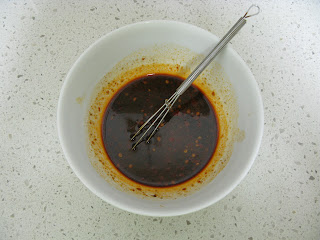It's a small place and quite popular, so we had to wait about 10 minutes to get a table on a Friday night. Not too bad really. There is very little inside waiting space, though, so it might have been more of an issue if it had been poring rain or really cold. It's not the best area of the city - expect to see a number of homeless people. But the restaurant makes the trip well worth it! You can park on the side streets near the restaurant in free 2-hour parking, but watch for the "Resident Parking Only" signs!
The service was excellent. Being on Commercial Drive, you'd expect the servers to have a certain funky look to them, and they did, but I find in a lot of places on Commercial that their cool look translates to poor service (that kind of "I don't care" attitude). At Bandidas, however, they were very attentive and super friendly.
Unfortunately, I don't have any pictures of what we ate because I was so ravenous and ate everything before the idea of taking pictures of it dawned on me! Everything was beautifully presented - it looked like art on a plate! But here's what we ate:
Son: a plain flour tortilla folded over with cheese in the middle to make a quesadilla - exactly how he likes it!
Hubby: Connie's Baked Burrito with walnuts ground, apple salsa , cheese, roasted red pepper sauce, purple cabbage and pinto beans, baked with enchilada sauce and cheese - hubby said it was very tasty and was so big he almost couldn't finish it!
Me: Four tacos (although next time I'll just get three - they were very filling). They allow you to mix-and-match the tacos, so I tried one of each of these:
- CONNIE’S: Walnuts ground, apple salsa, Daiya cheese & roasted red pepper sauce.
- LEONA GAYLE: Smoky-sweet chipotle tofu (organic), pinto beans, Daiya cheese, roasted red salsa, romaine lettuce & vegan sour cream.
- STELLA: Kale, butternut squash, roasted salsa, pinto beans, Daiya cheese, & vegan sour cream.
- RONNY RUSSELL: Roasted yams and onions, fresh guacamole, black beans, green salsa, purple cabbage & toasted pumpkin seeds.
My favourite was the Ronny Russell. The others were very tasty, but this one blew my mind! I will likely just order three of that one next time and call it quits. I'm not a big fan of Daiya cheese, either, so I probably would order without it next time too if I chose one that included it. I don't think not having it would take away from the flavour of any of the tacos because the other ingredients are already incredibly flavourful! All of the tacos were served on their made-in-house corn tortillas which were delicious.
We finished off the meal with a vegan chocolate chip coconut cake. It was fluffy, sweet and delicious. Even my son who doesn't normally like coconutty things loved this. It was also really nice to have the option of ordering a vegan dessert that didn't have Indian spices in it. Don't get me wrong - I enjoy Indian spices from time to time. But it seems like 90% of the vegan desserts out there are flavoured with Indian spices. It just gets very repetitive.
So, overall, I would give this restaurant a ten out of five if I could... but since there's no such thing as over 100%, I'll go with a five out of five. Definitely give it a try - you won't regret it! And now, I'll get back to my dreams about going back there for their breakfast menu, which also looks amazing. They substitute eggs with butternut squash and tofu for vegans. Heavenly!
















































